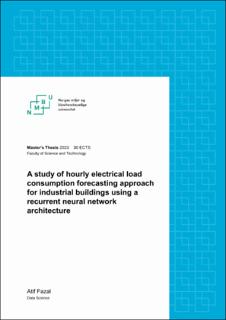| dc.description.abstract | Increased focus on decarbonization involving electrification and usage of variable renewable energy sources impose problems for the power grids. Power grids may suffer from increased disturbances as the demand for electricity increases. To potentially mitigate power supply disturbances, end users can help regulate the power grid by offering their flexibility in exchange for economic incentives. Industrial buildings such as ASKO are adapting and willing to offer their flexibility on the flexibility market.The methodology for developing flexibility bids to be offered on the flexibility market consist of several steps. One of them being accurate electrical load forecasts, these load forecasts are used as baseline estimates when creating flexibility bids. Accurate electrical load forecasts can also contribute with information during planning and power management leading to cost optimization in both operative and maintenance related tasks. This study investigates a deep learning approach to forecast hourly total electrical load consumption profiles for ASKO facility, specifically a variant of the recurrent neural network called long short-term memory network (LSTM). Three forecast models for time series analysis were developed and evaluated - a single step recurrent neural network with LSTM layers, a day-ahead recurrent neural network with LSTM layers predicting 24 hours into the future and a day-ahead recurrent neural network with LSTM layers predicting 24 hours into the future for one of the buildings assessing model performance and compared against another similar building. The data was provided by ASKO and consisted of total load bought, sold, produced and total electrical consumption for 11 buildings belonging to ASKO. Consumption profiles were available both in aggregated and disaggregated (separate profiles for all buildings) form. Data had to be treated before it could be fed to the model. A framework for tuning the LSTM networks was implemented. The models were subjugated to an extensive hyperparameter tuning process. The best model developed was the single-step recurrent neural network with LSTM layers achieving the R2 score of 0.94 and the MAE of 104.69. After obtaining the results the model performance was assessed and the models show promising results. However, it has been concluded that the presented models may not provide sufficiently accurate load forecasts and a number of aspects may need further investigation. | |
